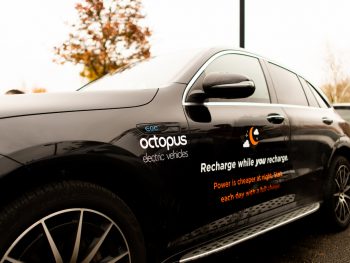Successful vehicle-to-grid demo takes UK ‘huge step closer’ to net zero
The real-world viability of vehicle-to-grid (V2G) technology has been proven in a new demo, showing how both people and the planet can benefit.

It’s said to be the first successful integration of vehicle-to-grid technology, using a test environment of the Balancing Mechanism, the primary tool used by National Grid ESO to balance Great Britain’s electricity system in real-time
Run by Octopus Energy Group and National Grid ESO, it’s said to be the first successful integration of vehicle-to-grid technology, using a test environment of the Balancing Mechanism, the primary tool used by National Grid ESO to balance Great Britain’s electricity system in real-time.
The firms said it’s the first time that vehicle-to-grid technology has been demonstrated in Great Britain to show that electric vehicles can receive a direct signal from the ESO to support system balancing.
And according to the two, it marks a major turning point in electricity supply and means that in the future, consumers could play a direct role in balancing the national transmission system through their electric vehicles while gaining from cheaper energy costs.
In a series of initial tests run in August 2022, Octopus charged and discharged the batteries of up to 20 electric cars from participating customers at times of grid imbalance.
Extrapolated out, the findings show that an hour of a million EVs exporting to the grid could generate the same amount of power as 5,500 onshore wind turbines.
And separate analysis from Octopus Energy’s electric vehicles arm shows that if the trial results were run for a whole year, the EVs could realise a profit of around £62m p/a, whilst also saving non-participating customers money through grid balancing cost reductions. In fact, customers could realise a potential saving of up to £840 per year, compared to unscheduled charging on a flat rate tariff – putting money back in people’s pockets at times of record high energy costs.
It’s said to be a real ‘line-in-the-sand’ moment for V2G tech, which is already set to appear in new EVs from several large car brands – including Hyundai and Volkswagen. And Octopus Energy Group is working to coordinate customer schedules with grid signals using its Kraken platform to provide flexibility as a service and seamless charging to customers.
Claire Miller, director of technology and innovation at Octopus Electric Vehicles, said: “We have shown that this technology is capable of helping to balance our future green grid, to the benefit of people and the planet.
“We’ve proved what is possible with the technology and cars that are currently on the market, and this is only going to grow. Soon we will have millions of electric cars sitting on driveways capable of storing and exporting green energy back to the grid when it needs it most – and once the vehicle-to-grid proposition is ready to be launched, these cars will help to support our renewables expansion and taking us a huge step closer to net zero.”
Jake Rigg, corporate affairs director, National Grid ESO, said the next steps are to take these learnings and work with industry on how the company can develop and deploy a balancing mechanism service for V2G.
“The trial findings will also influence future innovation projects, including the CrowdFlex project we are currently developing with industry, to establish additional routes for consumer engagement in electricity networks,” he added.

